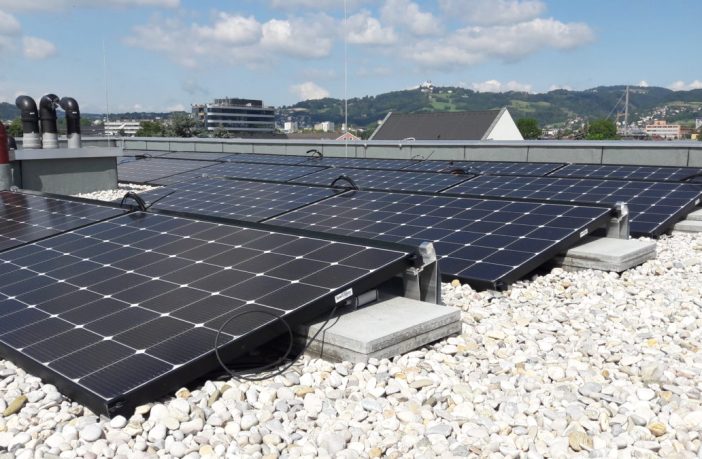- Austrian solar company my-PV has revealed the results of a one-year run for a solar project it built to support domestic hot water production at an apartment building in Linz, Austria.
“The housing cooperative chose a grid-autonomous direct current variant, in which solar power is used exclusively for water heating,” a company spokesperson told pv magazine. “In addition, we installed an independent system for monitoring and measuring data acquisition.”
The 14 flats are each connected to their own 1.36 kW PV systems, with four 340 W modules. The rooftop arrays are directly connected without inverters to my-PV’s Elwa DC electric hot water preparation system, which is connected to a 150-liter boiler.
“Our units can easily reach temperatures above 85 C,” the spokesperson said. “When in contact with drinking water, however, we recommend heating to a maximum of 60 C to prevent calcification of the heating rod.”
The company initially told the housing cooperative to set the backup boost temperature to 50 C.
“At this value, all individual needs of the residents are usually met, but the residents agreed on a temperature of 60 C,” the spokesperson said.
The solar arrays were able to reach an all-time share of 81% in domestic hot water production in the year to July 2021, with grid electricity covering the remaining percentage. For all of 2020, solar had a share of 37% and in the following year it increased to around 50%.
The core technology provided by my-PV for the project is the photovoltaic heating rod.
“This costs less than €700 excluded VAT,” the spokesperson said. “The power electronics, the control system and the user interfaces are included. Extra costs compared to a normal electric boiler are, apart from the additional costs for our heating rod, only the four modules with substructure and cabling, which is not much when you consider how cheap PV modules already are.”
Last year, my-PV unveiled a rooftop PV solution for thermal concrete-core activation in commercial buildings. The special configuration conveys surplus electricity generated from the rooftop array to an electric underfloor heating system, which transfers the energy to the foundation. The company said the proposed solution could reduce a building’s annual water and power costs by around 67%, compared to standard heating.
Author: Emiliano Bellini
This article was originally published in pv magazine and is republished with permission.















